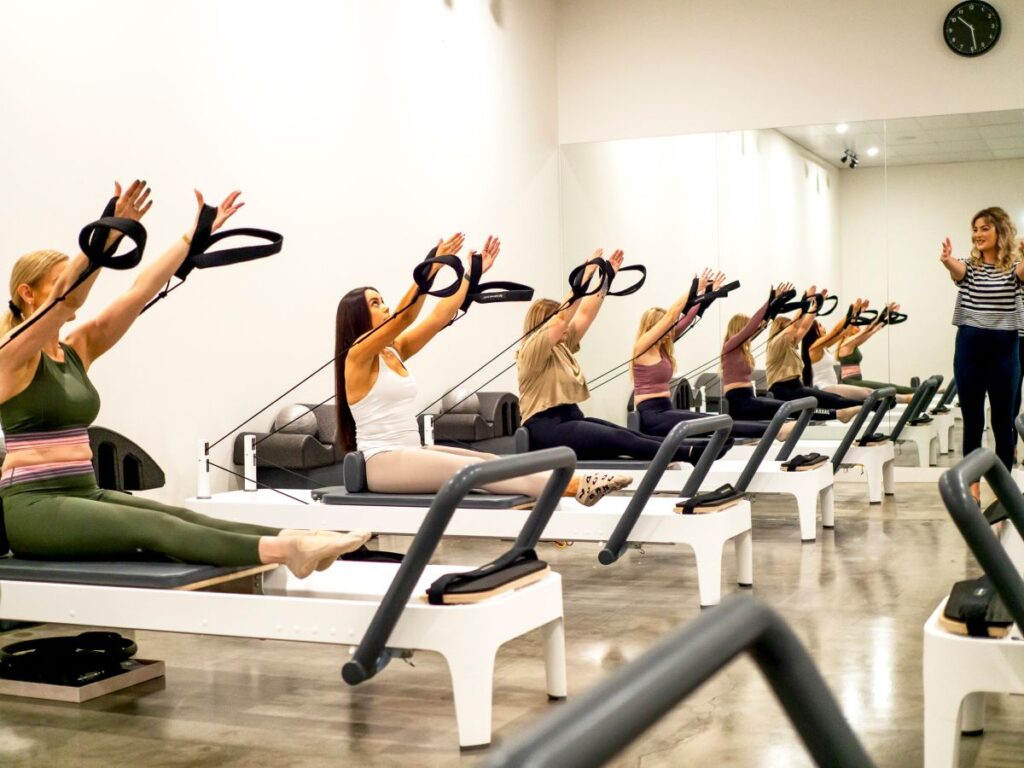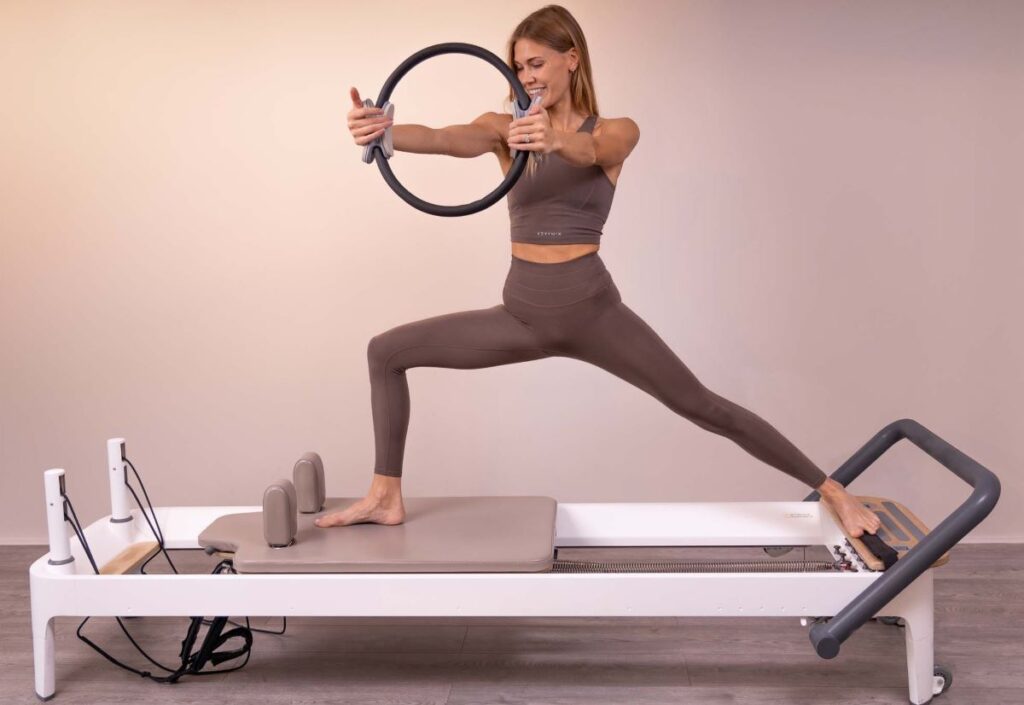Reformer Pilates has gained immense popularity in recent years, attracting fitness enthusiasts and beginners alike. Central to this practice is the reformer apparatus, which comes in various forms, including the traditional reformer and the reformer Pilates bed. While both serve the same fundamental purpose of enhancing strength, flexibility, and overall body awareness, they differ significantly in design, functionality, and user experience. This article explores these differences, helping practitioners make informed decisions about their Pilates journey.
Understanding the Basics of Reformer Pilates
Before delving into the specifics of the reformer pilates bed for sale and traditional reformer, it’s essential to grasp the foundational principles of Reformer Pilates. This method, developed by Joseph Pilates in the early 20th century, focuses on controlled movements that engage the core and promote overall body alignment. The philosophy behind Pilates is not merely about physical fitness; it encompasses a holistic approach to health that integrates the mind and body, fostering a deeper connection to one’s physical self.
The Role of the Reformer
The reformer is a versatile piece of equipment that utilises springs, pulleys, and a sliding carriage to provide resistance during exercises. This allows users to perform a wide range of movements, enhancing their strength and flexibility. The reformer can be adjusted to accommodate various fitness levels, making it suitable for both beginners and advanced practitioners. Additionally, the reformer’s design encourages proper alignment and technique, reducing the risk of injury and allowing for a more effective workout. Many practitioners find that the reformer’s unique setup enables them to explore movements that may be challenging on a mat, thus expanding their repertoire of exercises.
Key Benefits of Reformer Pilates
Reformer Pilates offers numerous benefits, including improved posture, increased muscle tone, and enhanced flexibility. The use of resistance helps to build strength without adding bulk, making it an appealing option for those looking to sculpt their bodies. Furthermore, the focus on core stability can lead to better overall body awareness and coordination. As practitioners engage in these controlled movements, they often experience a heightened sense of mindfulness, which can translate into other areas of their lives. The emphasis on breath control and concentration not only aids in physical performance but also promotes mental clarity and stress reduction, making Reformer Pilates a comprehensive approach to wellness.
Moreover, Reformer Pilates is particularly beneficial for rehabilitation and injury prevention. Many physiotherapists incorporate Pilates into their treatment plans, as the method allows for gentle yet effective strengthening of muscles that may be weak or imbalanced due to injury. By focusing on alignment and controlled movement, individuals can regain strength and mobility with a reduced risk of re-injury. This adaptability makes Reformer Pilates a valuable tool for athletes and everyday individuals alike, ensuring that everyone can find a path to improved physical health and well-being.
What is a Traditional Reformer?
The traditional reformer is the classic version of the Pilates apparatus. It consists of a rectangular frame with a movable carriage, adjustable springs, and various attachments for foot and hand placement. This design allows for a wide range of exercises targeting different muscle groups.
Design Features
The traditional reformer typically includes a padded carriage that slides along the frame, providing a comfortable surface for users. The adjustable springs offer varying levels of resistance, enabling practitioners to tailor their workouts to their individual needs. Additionally, traditional reformers often come with a footbar, shoulder blocks, and straps for added versatility.
Exercise Variety
One of the standout features of the traditional reformer is its ability to accommodate a vast array of exercises. From foundational movements to advanced techniques, the reformer can support a comprehensive Pilates routine. This versatility makes it a popular choice for studios and personal trainers, as it allows for creative and varied workout sessions.
Introducing the Reformer Pilates Bed
The reformer Pilates bed, sometimes referred to as a “bed reformer,” is an evolution of the traditional reformer. While it shares many similarities, there are key differences that set it apart. The design of the bed reformer is often more streamlined, providing a unique experience for users.
Design Innovations
One of the most notable features of the reformer Pilates bed is its larger and flatter surface. This design allows for greater freedom of movement and can accommodate a wider range of exercises. The bed reformer may also include additional features such as a raised platform, which can enhance accessibility for users with limited mobility.

Enhanced Stability and Support
The reformer Pilates bed often provides enhanced stability compared to traditional reformers. The wider base and lower centre of gravity can make it easier for users to maintain balance during exercises. This stability can be particularly beneficial for beginners or those recovering from injury, as it allows for a more secure and confident practice.
Comparing Functionality and Experience
While both the traditional reformer and the reformer Pilates bed serve the same purpose, the differences in functionality can significantly impact the user experience. Understanding these distinctions can help practitioners choose the right equipment for their needs.
Resistance and Adjustability
Both types of reformers offer adjustable resistance through springs, but the reformer Pilates bed may provide a more intuitive adjustment system. Some models feature colour-coded springs, making it easier for users to select the appropriate level of resistance quickly. This can enhance the flow of a workout, allowing for seamless transitions between exercises.
Accessibility for All Levels
The reformer Pilates bed’s design often makes it more accessible for individuals of varying fitness levels. The lower height and larger surface area can accommodate users who may struggle with traditional reformers. This inclusivity is particularly valuable in group classes, where participants may have diverse abilities and experience levels.
Training and Instruction
When it comes to training and instruction, both traditional reformers and reformer Pilates beds require knowledgeable instructors to ensure safety and effectiveness. However, the teaching approach may differ slightly based on the equipment used.
Instructor Training
Instructors who teach on traditional reformers may need to focus on different cues and techniques compared to those teaching on reformer Pilates beds. The unique design of the bed reformer can allow for more creative movement patterns, which may require instructors to adapt their teaching styles accordingly. This adaptability can lead to a more engaging and dynamic class experience.
Class Structure
Classes that utilise reformer Pilates beds may also differ in structure. The enhanced stability and versatility of the bed can allow for a greater emphasis on flow and transitions, creating a more fluid workout. In contrast, traditional reformer classes may focus more on individual exercises and precise movements. Visit https://www.betterhealth.vic.gov.au/health/healthyliving/exercise-intensity to get about exercise intensity.
Choosing the Right Equipment for You
Deciding between a traditional reformer and a reformer Pilates bed ultimately depends on individual preferences, goals, and physical considerations. Both options offer unique benefits, and understanding these can help practitioners make an informed choice.
Personal Goals and Fitness Level
For those new to Pilates, the reformer Pilates bed may provide a more accessible entry point. Its design can help build confidence and stability, making it an excellent choice for beginners. Conversely, experienced practitioners may prefer the traditional reformer for its versatility and the challenge it offers.
Studio Availability and Class Options
Availability of equipment in local studios can also influence the decision. Some studios may primarily offer traditional reformers, while others may have a range of reformer Pilates beds. Exploring class options and equipment availability can help practitioners find the best fit for their needs. Check out more about Compact Pilates Reformer vs Traditional: Which Should You Buy?
The Future of Reformer Pilates
As Pilates continues to evolve, the equipment used in practice will likely adapt to meet the needs of a diverse population. The reformer Pilates bed represents a significant advancement in this evolution, offering unique benefits that cater to a wide range of users.
Innovations on the Horizon
With ongoing research and development in the fitness industry, future innovations may further enhance the functionality and accessibility of both traditional reformers and reformer Pilates beds. These advancements could lead to even more tailored experiences for practitioners, ensuring that Pilates remains an inclusive and effective form of exercise.
Community and Support
The growth of the Pilates community in Australia and beyond has fostered a supportive environment for practitioners of all levels. As more individuals embrace the benefits of reformer Pilates, the demand for quality instruction and accessible equipment will continue to rise, driving further advancements in the field.

Conclusion
In summary, while both traditional reformers and reformer Pilates beds serve the same fundamental purpose, their differences in design, functionality, and user experience can significantly impact a practitioner’s journey. Understanding these distinctions allows individuals to make informed choices about their Pilates practice, ensuring they find the equipment that best suits their needs and goals.
Whether opting for the classic traditional reformer or the innovative reformer Pilates bed, the key lies in embracing the principles of Pilates and enjoying the journey towards improved strength, flexibility, and overall well-being.